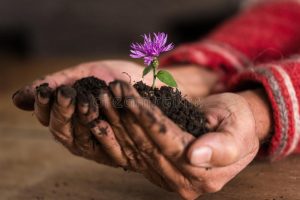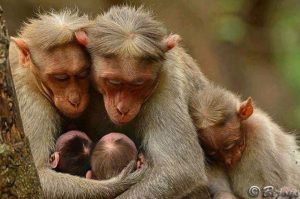 The Yogabliss, Two Rivers/RiverTree Yoga on-line Moving into Meditation classes met this morning. We contemplated our younger selves. Experienced receiving life. Cherished the Life we hold in our hands and our hearts. Nature regenerates and nurtures new life.
The Yogabliss, Two Rivers/RiverTree Yoga on-line Moving into Meditation classes met this morning. We contemplated our younger selves. Experienced receiving life. Cherished the Life we hold in our hands and our hearts. Nature regenerates and nurtures new life.
It’s up to us to nurture human and more than human life.
We can teach our children appreciation, bonding and deep caring for the more than human world.
Our practice was informed by the fourth principle and practice of Rhonda Fabian’s article, Engaged Ecology: Seven Practices to Restore Our Harmony with Nature. The fourth principle: Nature regenerates and nurtures new life. The fourth practice is cherishing and nurturing the young.
We heard Zen Master Thich Nhat Hanh’s poem, Please Call Me by My True Names. Thay recounts the waves of life arriving again and again into our inter-being. His word portraits convey the joy and sorrow of our human condition.
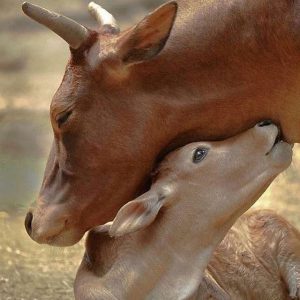 We also drew from Darcia Narvaez’ Kosmos Journal essay, Reconnecting Children to Nature. This excellent essay asks which culture we want to build: “cooperative companionship or competitive detachment.” Darcia is founder of Evolved Nest which offers scientific support and other resources for creating a culture of global flourishing. This process starts with the way we nurture our children and the natural world around us.
We also drew from Darcia Narvaez’ Kosmos Journal essay, Reconnecting Children to Nature. This excellent essay asks which culture we want to build: “cooperative companionship or competitive detachment.” Darcia is founder of Evolved Nest which offers scientific support and other resources for creating a culture of global flourishing. This process starts with the way we nurture our children and the natural world around us.
We ended with poet Mary Oliver’s poem Sleeping in the Forest at Night. Mary describes her experience of “nestedness” while sleeping on the forest floor.
Take a few deep, slow nourishing breaths. Really take them in. Really let them go. Relax, however you can. See if you can open to the fresh newness of experience. Notice where your awareness is drawn. Explore your being as Nature’s gift. As Thich Nhat Hanh says: Look deeply: every second I am arriving.
Right now you can feel your feet resting on Earth’s body. Can you imagine your very young feet – before they traveled through your life’s journey? Recall how they grew over the years. Remember the moments of aliveness while bare footing, dancing or swimming. Feel how your feet carried you; how faithfully they served you. Every second you are arriving.
Right now you can feel your hands resting on your body. Listen to your hands speaking their own language. Can you imagine your very young hands – before they explored every day of your life? Recall how they grew over the years. Remember what you’ve touched, held on to and let go of. Remember the moments of joy, of love and embrace. Feel how your hands have brought so much of the world closer to your heart.
 Our bodies become the very expression of nurturing and love. We were born to be nurtured and nurture others. Nature regenerates and nurtures new life. This is the fourth of Rhonda Fabian’s Seven Principles and Practices for Engaged Ecology. The practice is cherishing and nurturing the young. Rhonda writes:
Our bodies become the very expression of nurturing and love. We were born to be nurtured and nurture others. Nature regenerates and nurtures new life. This is the fourth of Rhonda Fabian’s Seven Principles and Practices for Engaged Ecology. The practice is cherishing and nurturing the young. Rhonda writes:
Nature reproduces itself: the tender leaf, rosebud, the baby bird, tiny fish. Each new life, anywhere, at any scale, is Nature’s freshest gift of innocence and purity, fully deserving the most basic right—to live.
All life is a gift, innocent and pure, fully deserving of life. Our practice is to receive this gift in cherishing and nurturing the young. Rhonda sets forth this practice in the form of vows:
Aware that a baby’s first breath ushers in new hope for the world, we vow to cherish, protect, and nurture new life. Knowing the seeds we plant in young minds will be the fruit our society reaps, we are committed to looking at all the ways children are affected by their environment. . . .We will work to support the concerns of mothers and children worldwide. . . . We will create opportunities and encourage children to participate in . . . Nature. . . . As adults, we will . . . take into account the needs of children in our community, not just in the present, but also for generations to come.
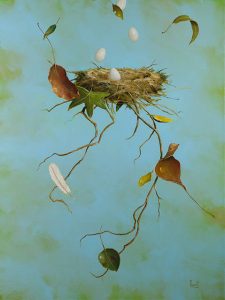 As we nurture, we teach our children what it is to nurture. We model caring as a way of navigating through the world. There is a threshold at each of our choices where we can pause. We can consider how the life of each choice will continue to affect many lives. We can plant seeds of care so that the babies of the future will breathe and love freely. Zen Master and poet Thich Nhat Hanh writes:
As we nurture, we teach our children what it is to nurture. We model caring as a way of navigating through the world. There is a threshold at each of our choices where we can pause. We can consider how the life of each choice will continue to affect many lives. We can plant seeds of care so that the babies of the future will breathe and love freely. Zen Master and poet Thich Nhat Hanh writes:
Don’t say that I will depart tomorrow —
even today I am still arriving.
Look deeply: every second I am arriving
to be a bud on a Spring branch,
to be a tiny bird, with still-fragile wings,
learning to sing in my new nest,
to be a caterpillar in the heart of a flower,
to be a jewel hiding itself in a stone.
I still arrive, in order to laugh and to cry,
to fear and to hope.
The rhythm of my heart is the birth and death
of all that is alive.
I am the mayfly metamorphosing
on the surface of the river.
And I am the bird
that swoops down to swallow the mayfly.
I am the frog swimming happily
in the clear water of a pond.
And I am the grass-snake
that silently feeds itself on the frog.
[ . . . ]
 My joy is like Spring, so warm
My joy is like Spring, so warm
it makes flowers bloom all over the Earth.
My pain is like a river of tears,
so vast it fills the four oceans.
Please call me by my true names,
so I can hear all my cries and my laughter at once,
so I can see that my joy and pain are one.
Please call me by my true names,
so I can wake up,
and so the door of my heart
can be left open,
the door of compassion.
In these moments resting on Earth’s body, we “arrive, in order to laugh and to cry, to fear and to hope. The rhythm of [our] heart[s] is the birth and death of all that is alive.” We can sense the rhythm of our hearts, feel the pulse of life that we share with all living beings. Our cells contain our parent’s genes. We bequeath our genes to our children. We are inter-beings. We can reflect on those almost inexpressible moments of joy we’ve experienced upon realizing our kinship – the life of our parents flowing through us to our children. When we expand our circle of kin to include both human and more than human beings we “. . . can wake up, . . . so the door of [our] heart[s] can be left open, the door of compassion.”
In her Kosmos Journal essay, Reconnecting Children to Nature, Darcia Narvaez writes:
 . . . it is possible to . . . restore the cycles of connected, cooperative companionship. We can learn what our basic needs are and find ways to help everyone get them met. We can take steps that open our minds and hearts and build empathy towards others who are different from us. We can become aware and careful about where we put our greatest asset – our attention. We can build attachment to the natural world by immersing ourselves in its beauty and developing our connection with its aliveness.
. . . it is possible to . . . restore the cycles of connected, cooperative companionship. We can learn what our basic needs are and find ways to help everyone get them met. We can take steps that open our minds and hearts and build empathy towards others who are different from us. We can become aware and careful about where we put our greatest asset – our attention. We can build attachment to the natural world by immersing ourselves in its beauty and developing our connection with its aliveness.
Today we place our greatest asset, our attention, to our wide circle of kin. As Mary Oliver wrote: Attention is the beginning of devotion. We can teach our children loving awareness. We can help them bond with Nature. Together we can spend time in relationship with living places, fauna, flora and fungi beings. We can listen to traditional stories about our kinship with Earth and her earthlings. Over time we can foster appreciation, bonding and deep caring for the more than human world. Darcia writes about “our species’ evolved nest, a wider living circle as:
. . . critical for building humanity’s social brain in early life, nestedness appears to be vital throughout life for maintaining full humanity and an earth-based moral compass . . . To heal ourselves and our world, we simply must return to this way of nurturing children, adults and communities.
Mary Oliver describes her experience of nestedness with more than human earthlings:
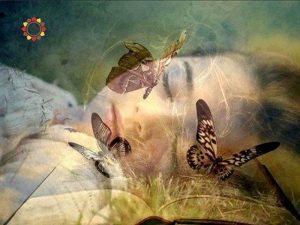 Sleeping in the Forest
Sleeping in the Forest
I thought the earth
remembered me, she
took me back so tenderly, arranging
her dark skirts, her pockets
full of lichens and seeds. I slept
as never before, a stone
on the riverbed, nothing
between me and the white fire of the stars
but my thoughts, and they floated
light as moths among the branches
of the perfect trees. All night
I heard the small kingdoms breathing
around me, the insects, and the birds
who do their work in the darkness. All night
I rose and fell, as if in water, grappling
with a luminous doom. By morning
I had vanished at least a dozen times
into something better.

